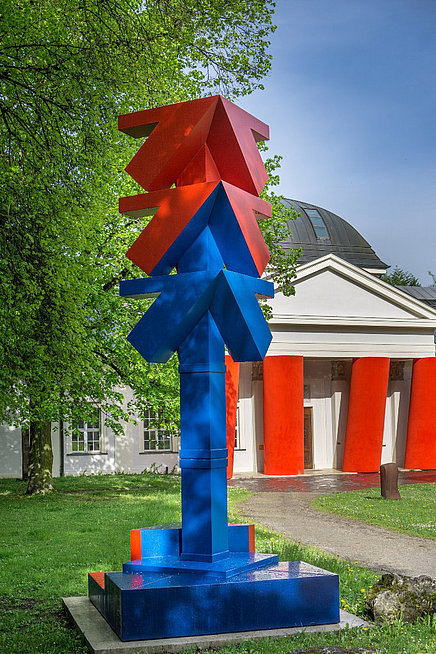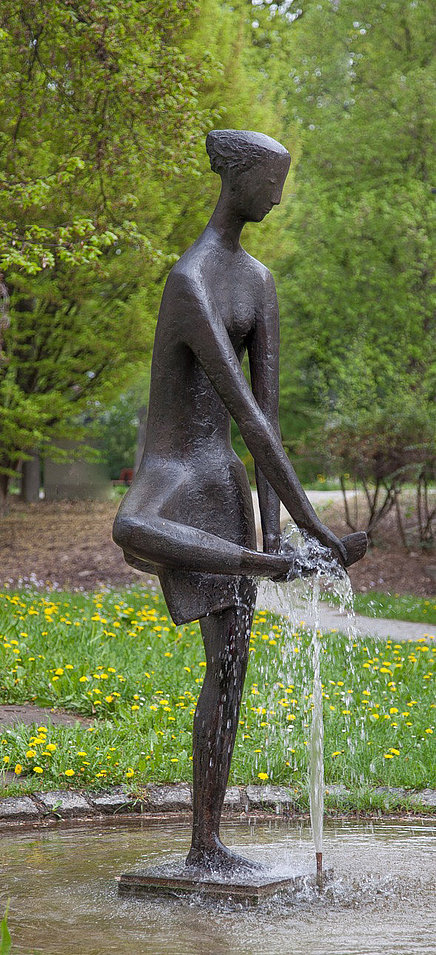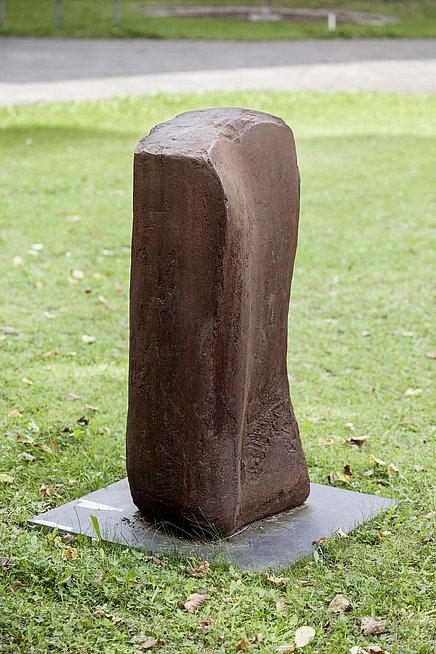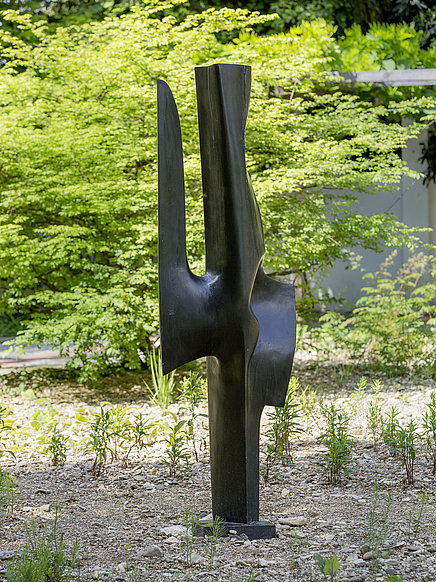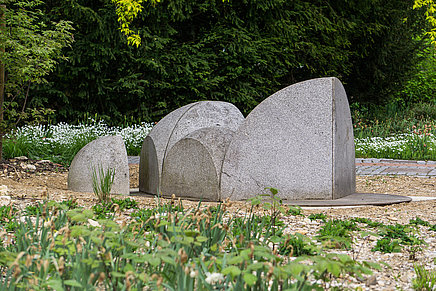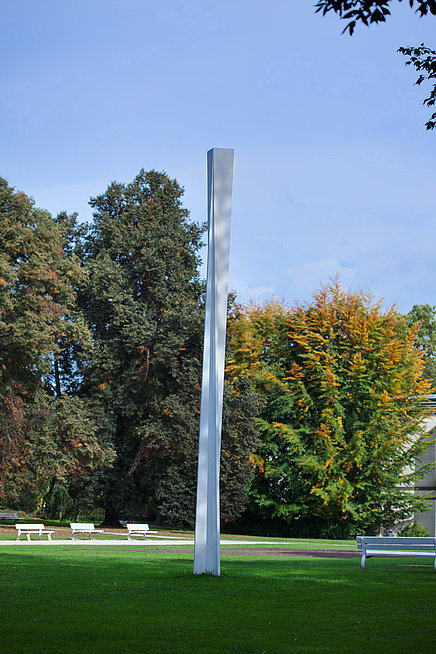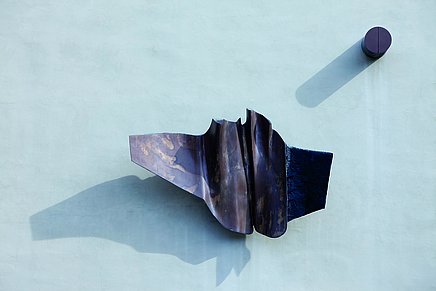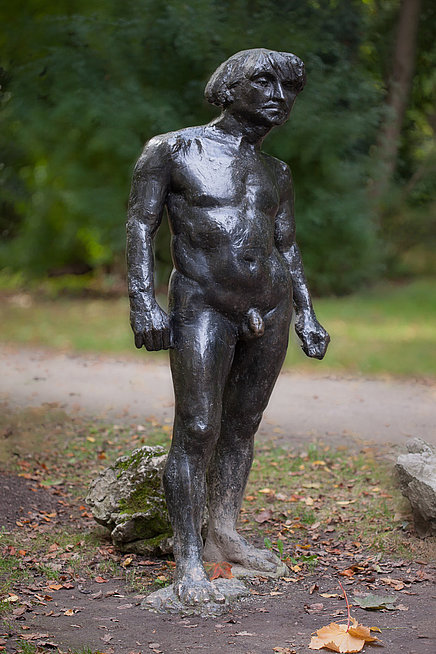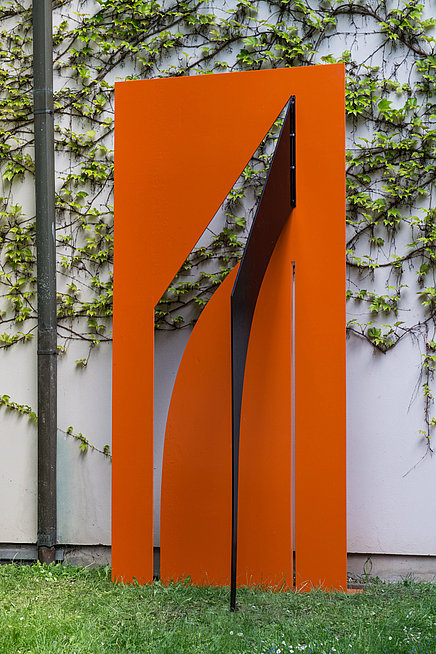Sculpture Park
Between the City and the Municipal Park
Eckzeichen (Corner Sign) (1983) by Otto Herbert Hajek glows red and blue by the edge of the street and points the way to the museum entrance. This four-meter-tall sculpture with its arrow-like triangles, from Hajek’s Stadtzeichen (Street Signs) series establishes a symbolic connection between the city and the museum. The bright red returns in the striking installation of columns at the museum’s portal. Magdalena Jetelová designed this work of art for this Jugendstil building in 2006: all together, fourteen sculptures can be seen in the forecourt of the museum and in the adjacent municipal park.
Art Outdoors
In addition to Jetelová’s installation of columns, another work of art was created for the museum’s facade: the abstract wall sculpture Montana III by Bernhard Heiliger found its place above the museum entrance in the municipal park shortly after the museum opened. In the decades that followed, additional works of art were integrated into green spaces in collaboration with the Stadtgartenamt (Municipal Parks Department). As a result, visitors to the park now encounter Waldemar Grzimek’s bronze sculpture Bedrohter II (Threatened Man II) (1970) at an intersection of paths. This figure, depicted realistically albeit somewhat distortedly, reveals how unprotected the naked body is. It contrasts with three white stelae by Ben Muthofer. These folded sculptures several meters tall are composed largely of triangular planes. They are arranged so that they form a virtual triangle when viewed spatially. The latest addition to the open-air exhibition is Teilung (Division) (1988) by Walter Grill. This ensemble of several semispherical elements of granite was placed in the northeastern part of the park in 2015.

